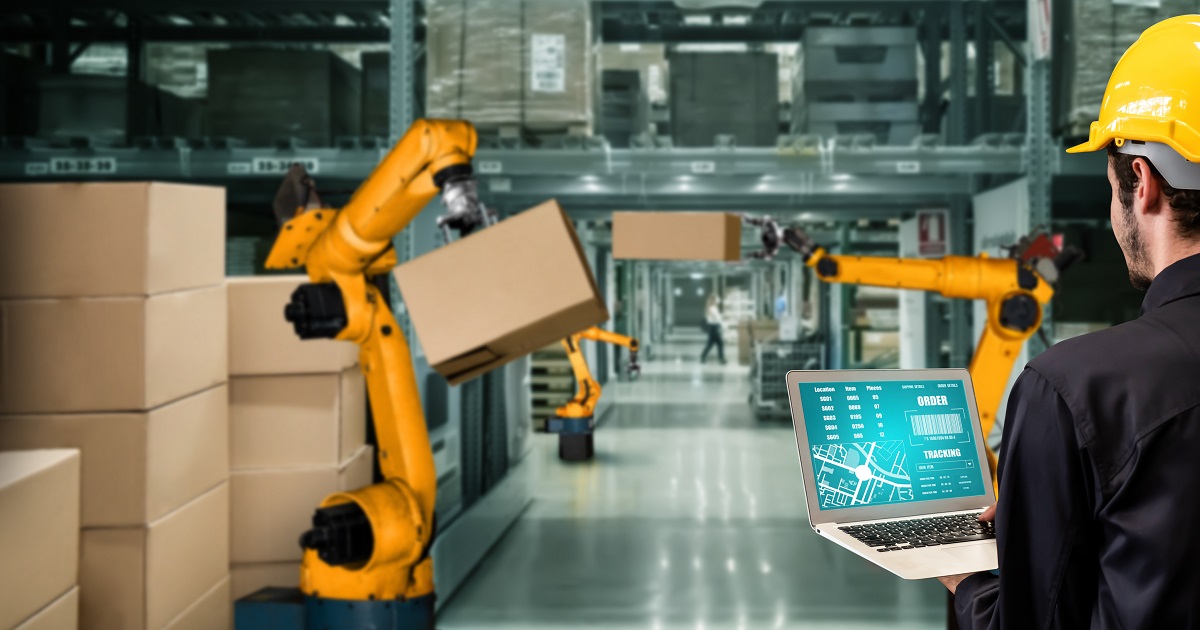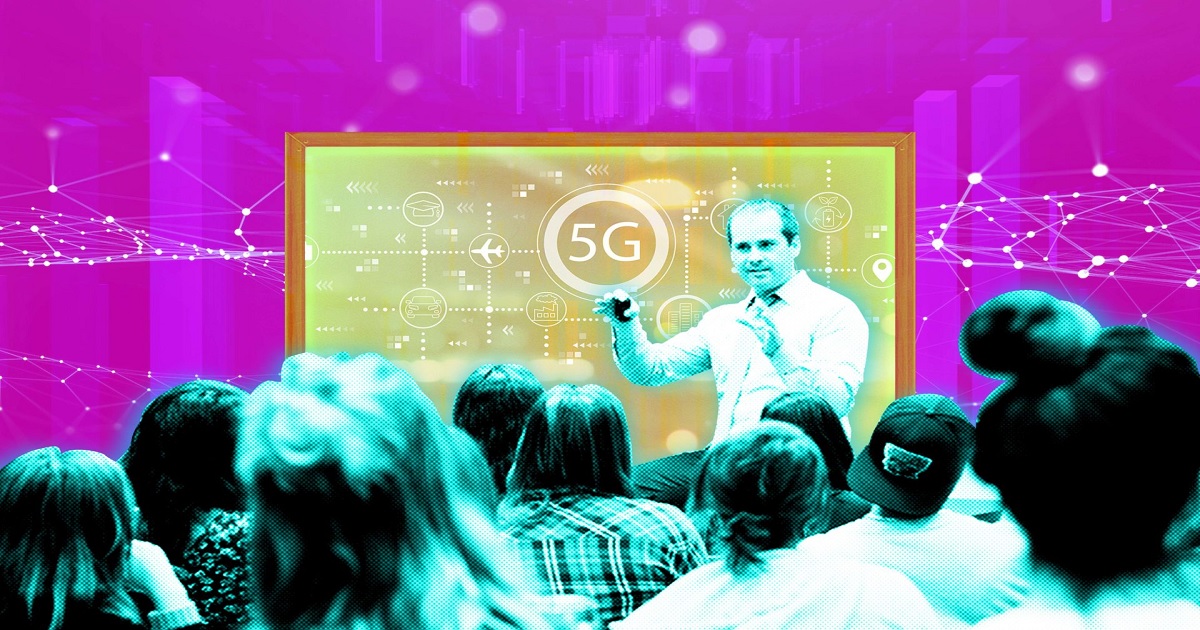
Industrial IoT, IoT Security
Article | July 12, 2023
Introduction
Automation, interconnectivity, machine-learning, and real-time data are part of Industry 4.0, a new phase in the Industrial Revolution. Industry 4.0, which includes IIoT and smart manufacturing, combines physical production and operations with smart digital technologies. It creates a more holistic and linked environment for manufacturing and supply chain management organizations.
In today's production environment, "automation" has a new, more advanced meaning than it has in the past. Industry 4.0 refers to the necessity of lean, efficient operations and the function of sustaining and improving production. In contrast, IIoT distinguishes manufacturing gadgets from consumer products that can connect wirelessly to internal networks and the internet.
IIoT Powering the Fourth Industrial Revolution
Manufacturing, logistics, oil and gas, transportation, mining, aviation, energy, and other industries use the IIoT. Its main goal is to improve operations, mainly through process automation and maintenance. IIoT capabilities improve asset performance and allow for improved maintenance management. The introduction of Industry 4.0 technologies marked a significant milestone in the human-machine relationship's history. I4.0 was first talked about in 2011. Since then, it has proliferated because of new technologies such as cyber-physical systems, IT/OT convergence, AI/ML, Blockchain, and AR/VR.
Data is at the heart of the Fourth Industrial Revolution. The growth of the Internet of Things (IoT) is one of the main reasons behind this. The IoT is making a significant contribution in making businesses smarter and improving their workflows. Moreover, more data is being made and used by connected devices than ever before, from the home to the factory.
In order to thrive in the fourth industrial revolution, businesses must embrace new technologies. The general structure of IIoT applications is defined by standards-based industrial system architectures such as the Industrial Internet Consortium's Reference Architecture. Sensors and IoT devices, IoT middleware platforms, IoT gateways, edge/cloud infrastructures, and analytics applications are all part of the stack.
The Future of the IIoT
The Industrial Internet of Things (IIoT) is primarily regarded as one of the most significant current and future trends influencing industrial companies.
To comply with new rules, industries are rushing to upgrade their systems, machinery, and equipment. This is necessary to keep up with market volatility and deal with disruptive technologies.
Safety, efficiency, and profitability have all improved dramatically in industries that have adopted IIoT. As IIoT technologies become more widely adopted, this tendency is projected to continue.
Conclusion
The fourth industrial revolution has drastically altered our perceptions of things in the workplace. At a rapid rate, capitalists are becoming more interested in sophisticated ideas.
The way forward is to embrace existing and emerging technology throughout fundamental operations to unleash more enticing possibilities. It emphasizes the importance of comprehending the impact collaborative ecosystems can have as well as how they will become a major differentiator for generating value with a better-trained workforce.
Read More

Security, IoT Security
Article | July 13, 2023
5G trends are shaping the future of various technologies, from the Internet of Things to virtual reality. Learn more about the top trends in 5G to stay ahead of the competition in this sector.
Contents
1 The Current State of IoT Data Security
2 Top Trends in IoT Data Security in 2023
2.1 Emergence of AI-powered Security Solutions
2.2 Potential of Blockchain Technology
2.3 Growing Use of Zero-trust Security Frameworks
2.4 Greater Emphasis on End-to-end Encryption
2.5 Industry and Government Collaboration
3 Conclusion
As the Internet of Things (IoT) continues to rapidly expand, data security has become a critical concern for businesses and consumers alike. With recent high-profile breaches and cyberattacks, the latest trends in IoT data security focus on implementing stronger encryption and authentication protocols, as well as enhancing device-level security measures to protect sensitive data from potential threats.
1 The Current State of IoT Data Security
The growing adoption of IoT has led to a digital transformation in the way businesses operate. IoT technology has enabled organizations to collect and analyze vast amounts of data in real-time, allowing for improved decision-making, increased operational efficiency, and enhanced customer experiences. Despite these benefits, organizations are currently facing significant IoT data security challenges that must be addressed to fully realize the potential of this technology.
Companies recognize unauthorized access (43%), data privacy (38%), and data integrity (31%) as top IoT security challenges.
(Source: Statista)
Businesses are actively addressing these security challenges by investing in IoT and data security solutions. The global market for IoT data security continues to grow, and companies are increasingly investing in strategies for data security in the IoT. To secure access to mission-critical connected devices and sensitive data, it is imperative for businesses to keep track of IoT trends in data security.
2 Top Trends in IoT Data Security in 2023
2.1 Emergence of AI-powered Security Solutions
AI-powered security systems can rapidly detect and respond to attacks, reducing the likelihood of significant damage to IoT devices or networks. In particular, its ability to analyze vast amounts of data in real-time and identify anomalies or potential security threats makes AI a vital component of an IoT data security strategy.
Detecting an IoT security breach in progress is possible with AI security systems, which identifies unusual behavior by analyzing data patterns from IoT devices. AI can also be used to diagnose potential vulnerabilities in IoT devices and networks, allowing organizations to take proactive measures to address them before they are exploited.
The pattern recognition capabilities of AI also help secure IoT technology through predictive analytics. By analyzing past data breaches and attacks, AI systems detect potential cyberattacks and develop predictive models to detect and respond to them proactively.
AI-driven security systems have the potential to streamline incident response by lessening the load on cybersecurity teams and reducing response time. The ability to adapt and learn from a previous cyberattack allows machine learning (ML) algorithms to create novel strategies that prevent similar attacks in the future.
AI represents a significant development in addressing IoT security concerns since it provides sophisticated capabilities to protect IoT networks and devices that conventional security measures cannot provide. AI-enabled security systems deliver immediate identification, reaction, and deterrence of possible threats, which is why they will be critical in ensuring data security in the IoT.
2.2 Potential of Blockchain Technology
Blockchain's unique features, such as decentralization, immutability, and cryptographic security, provide a robust framework for secure communication and data sharing among IoT devices. By leveraging blockchain technology, businesses can ensure their IoT data's integrity, confidentiality, and authenticity.
One of the key advantages of using blockchain for IoT data security is its decentralized nature. Blockchain networks are distributed and run on a peer-to-peer basis, making it difficult for attackers to compromise the network. This also makes it an ideal solution for recording and securing data from multiple access points, such as IIoT systems.
Additionally, blockchain networks are designed to be immutable, making them an ideal solution for IoT data security and providing a tamper-proof and transparent ledger for recording data flow. This can help enterprises identify and mitigate security threats more quickly and efficiently, reducing the risk of cybersecurity incidents. A research paper published in Wireless Networks highlights the advantage of using a Blowfish Blockchain Model to enable IoT data sharing security, particularly for multimedia content.
Blockchain technology is a promising solution for securing IoT data. Its unique features, including decentralization, immutability, and cryptographic security, make it an ideal candidate for many IoT use cases. This technology can potentially transform data security for IoT devices by offering the IoT sector the solution it requires.
2.3 Growing Use of Zero-trust Security Frameworks
Zero-trust frameworks ensure that only authorized devices and users can access sensitive data and systems, protecting against insider threats and external attacks. This is especially important in IoT environments, where devices may lack traditional security measures like firewalls and antivirus software.
Device identity management is a critical component of zero-trust security for IoT data. Only recognized devices are allowed access to a network or data by leveraging processes and technologies that authenticate device identity. With Zero Trust, any connected device must be authorized before accessing any resources, including data.
By closely monitoring and managing access, businesses can maintain the security of the IoT. This protects against threats that exploit weak device identity management. Overall, zero-trust security frameworks are essential for safeguarding IoT data from malicious actors and protecting the integrity of IoT ecosystems.
2.4 Greater Emphasis on End-to-end Encryption
IoT poses a threat to data security when users do not take proper measures to protect the data generated. End-to-end encryption provides a strong layer of protection against unauthorized access, interception, and other cyber threats by encrypting data at the source, during transmission, and at rest.
IoT devices collect and process a wide range of sensitive data, from personal information and financial data to critical infrastructure and medical records. This data is often transmitted over networks and shared with cloud services, and the risk of cyberattacks during transmission cannot be ignored.
End-to-end encryption can provide a strong layer of protection by encrypting data at the source, working to improve the limited data security of the IoT. As the use of IoT devices continues to grow, implementing end-to-end encryption will become increasingly important for ensuring the security and privacy of sensitive IoT data.
2.5 Industry and Government Collaboration
In late 2021, the UK and Singapore governments became the first to announce obligatory security requirements for specific categories of IoT devices. Due to IoT data security risks, other countries have also defined guidelines, best practices, certifications, or labeling efforts for IoT devices. However, adoption among IoT device makers and vendors has been slow.
The National Institute of Standards and Technology (NIST) has been working on establishing cybersecurity guidelines for IoT devices. In June 2022, NIST incorporated consumer IoT cybersecurity criteria into its family of IoT cybersecurity guidance. NIST is also working with the IoT industry to design, standardize, and test solutions for IoT security controls.
By discussing IoT device security concepts and establishing guidelines in collaboration, the industry and the government can foster adoption of general methods to protect IoT devices from cybersecurity breaches. Such cooperation can be crucial in ensuring that IoT devices are secure from cyber threats and that IoT device makers and vendors adopt best practices for IoT device security.
3 Conclusion
The trends in IoT data security showcase several proactive measures that can be taken to protect sensitive data in a rapidly evolving technological landscape. In addition, organizations are moving towards a more comprehensive approach to IoT data security with the emergence of AI-powered security solutions, blockchain technology, and the shift to zero-trust security frameworks.
As IoT devices continue to proliferate, organizations must prioritize security and data protection to prevent data breaches and cyberattacks. This emphasizes the need for collaboration between industry and government to strengthen security measures and improve IoT device security by building with a ‘secure by design’ approach.
Read More

IoT Security
Article | June 28, 2023
The nature of digital and physical security is evolving as a result of cloud-based IoT software, which enables both security components to be combined and used to exploit data better.
Commercial use of cloud-based IoT software is possible, and cloud-based solutions have some advantages in the area of security. IoT technology, which is essential to this development, is driving worldwide development in many areas and revolutionizing daily operations for many businesses.
Data is essential to success in almost every sector, and security is no exception. To better understand what's going on in your business, you can combine cloud-based solutions that contain all the information on a single interface. For instance, integrating security camera feeds with cloud-based access control systems enables real-time visual identification verification.
The Impact of Combining Physical and Cyber Security
Combining digital and physical security, often known as security convergence, helps optimize IoT and cloud-based security systems. A cloud-based physical security system needs cybersecurity software to guard against internet flaws and intrusions. Similarly, physical security measures prevent sensitive data from getting into the wrong hands. Teams for physical and cyber security might combine to provide a more comprehensive action plan. The more seamlessly all physical and digital security components are linked, the more secure and future-proof a commercial system will be.
When organizations use IoT technology, cybersecurity is a significant concern. However, by combining physical and digital security, organizations can make sure their cloud-based systems are well protected from vulnerabilities. In addition, the security and IT teams will also be better able to manage the evolving security landscape when the organization combines physical and digital security ideas.
Read More

Article | April 10, 2020
As development teams race to build out AI tools, it is becoming increasingly common to train algorithms on edge devices. Federated learning, a subset of distributed machine learning, is a relatively new approach that allows companies to improve their AI tools without explicitly accessing raw user data. Conceived by Google in 2017, federated learning is a decentralized learning model through which algorithms are trained on edge devices. In regard to Google’s “on-device machine learning” approach, the search giant pushed their predictive text algorithm to Android devices, aggregated the data and sent a summary of the new knowledge back to a central server. To protect the integrity of the user data, this data was either delivered via homomorphic encryption or differential privacy, which is the practice of adding noise to the data in order to obfuscate the results.
Read More